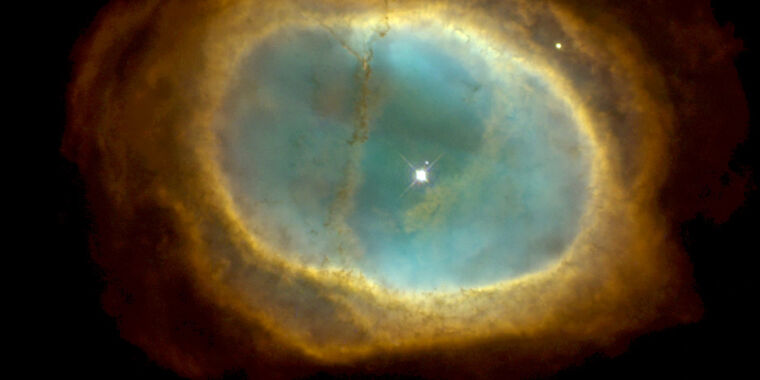
On Friday, NASA continued to build the hype for next week’s image release from the Webb Space Telescope by announcing the five objects in the first cache of images. A few of the targets are exactly what you’d expect, given what scientists have said they want to use the telescope to image, while a couple have likely been chosen because they’ll produce some fantastic visuals.
The target list also shows NASA’s thoughts about how it can get informative data as quickly as possible. We’ll give a little background on each of the targets below.
WASP-96 b: One of the most exciting features of Webb is its ability to analyze the composition of the atmospheres of exoplanets. When a planet passes between its host star and Earth, some of the star’s light will pass through its atmosphere, allowing the materials in the atmosphere to absorb specific wavelengths in the star’s light. This signal is tiny since only a small fraction of the star’s light will pass through the atmosphere, so it will typically take months of observations to get a good signal.
WASP-96 b allows us to get a good signal much more quickly, as it’s a planet composed mostly of atmosphere. While it’s about half the mass of Jupiter, it is physically larger, indicating that it’s mostly made of gas. It also has an orbital period of just 3.4 days, which means we can image its atmosphere twice a week. NASA will show the infrared spectrum of light that has made it through the atmosphere and will undoubtedly highlight the spectral signatures of molecules in the planet’s atmosphere.
The Carina Nebula: This will probably be a “just showing off” image. The Carina Nebula is a huge cloud of gas lit by the massive stars that are forming within it. It’s home to the most luminous star we’ve identified in the Milky Way, as well as Eta Carinae, my favorite candidate for “most likely to go supernova.” The star came so close to destroying itself in a massive eruption about 175 years ago that it formed a nebula within the Carina Nebula.
This image will look spectacular. And there’s potentially interesting science to be done here. Webb should have the resolution to work out smaller-scale structures within the nebula and maybe even determine the flow of gas in some regions based on the changes in the spectrum caused by red- and blue-shifting. Finally, Webb may be able to detect some interesting molecules in the cooler areas of the nebula. But I suspect it will take some time to come down from the awe-inspiring aspects of the image before anyone pays attention to the science.








